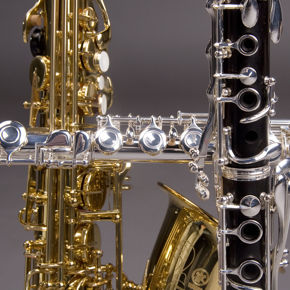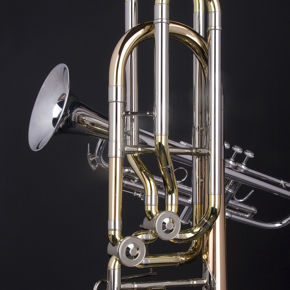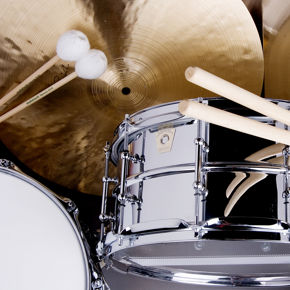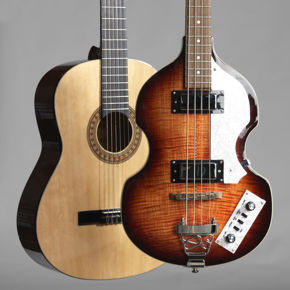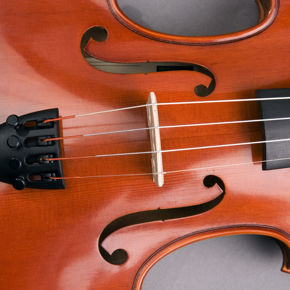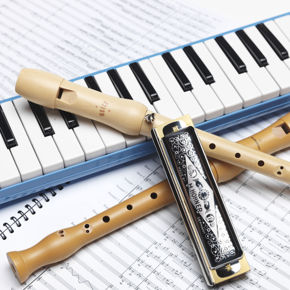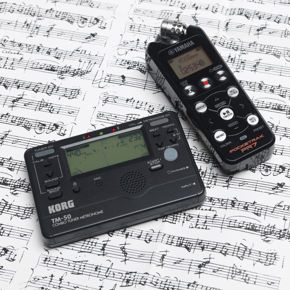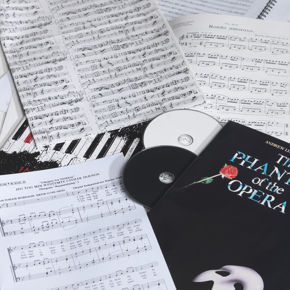ILLUSTRATIONS FOR BRASS BAND
1. Allegro Moderato con brio
2. Andante semplice
3. Allegro Moderato e leggiero
4. Lento doloroo
5. Allegro Moderato con brio
This work was commissioned for the 1969 York Festival and was first performed at Yorkminster by four brass bands, led by The Black Dyke Mills Band. They also played the piece for the first radio broadcast in August 1972. It is a prime example of Phylliss lifelong interest in popular music and of her undogmatic and adventurous approach, always relishing the challenge of instrumentation foreign to the conventions of her contemporary musical elite.
It was reviewed in The Tablet (12 July 1969): Especially appreciated was a new piece for brass bands (not by any means an everyday occurrence) by Phyllis Tate, commissioned by the York Festival. It was in some ways an epitome of the programme of the Concert for Massed Bands, rousing us with Trumpets with brazen din, blast you the citys ear, amusing us with an illustration from A Midsummer Nights Dream and sobering us with another from Hamlet.
Phyllis herself wrote about the composition as follows: It is often said that the brass band repertoire suffers from not having sufficient new, original material as distinct from arrangements, and that consequently much of what is played is conservative in idiom. This seems a pity when the standard of execution of the foremost bands is so tremendously high. I was therefore delighted to accept a commission from York Festival 1969 to provide a work which should have a modern edge to it and I have tried to to use the bands sonorities in somewhat new ways. For example, the second and third movements are more delicately scored, as if they were chamber music, in contrast to the symphonic writing of the other movements.The quotations from Shakespeare give a fairly exact key to the nature of each piece; the last movement is a varied repeat of the first. I am indebted to Mr. William Relton for his help in scoring this work.
1. Trumpeters with brazen din, blast you the citys ear (Antony and Cleopatra)
2. That strain again! It had a dying fall (Twelfth Night)
3. I have a reasonable good ear in music; let us have the tongs and the bones (A Midsummer Nights Dream)
4. They bore him barefaced on the bier (Hamlet)
5. Reprise of No.1
The work is still part of the repertoire for brass bands: A delightful piece, commented Jim Yelland on www.themouthpiece.com. It has been performed several times by the Black Dyke Band as well as by The Fairey Engineering Brass Band. The Brighouse and Rastrick Brass Band performed it for a Radio 3 concert of British brass music in November 1980, together with The Northern Brass Ensemble, conducted by Geoffrey Brand.
PHYLLIS TATE
Phyllis Tate was one of the most prominent British composers of the second half of the twentieth century. Her music was widely performed during her lifetime and received great critical acclaim. Her musical output was extensive and varied, ranging from music for schools to her opera The Lodger. Her fascination with musical textures led her to explore the potential of unusual instruments and combinations which tended not to be readily accepted or easily available for performance. These instruments included the saxophone, the celeste, the bass clarinet, the accordion, the lute and the harmonica, and the parts were often written for a virtuoso of the specific instrument. Such instruments were often used with her other lifelong musical passion, the human voice, in settings of poems from which she gained much inspiration.
Phyllis Tate was highly respected by contemporary musical peers for her idiosyncratic musical imagination, her unique sensitivity to musical colour and her fastidious craftsmanship. All these qualities are exemplified in two of her best-known works: the Sonata for Clarinet and Cello, and the Nocturne for Four Voices, her setting of a poem by Sidney Keyes, who perished in World War II. Many critics commented on her originality and refusal to go along with fashionable trends of writing music for the musical elite of her time. In fact much of her music has a robustly popular appeal, notable examples being her orchestral suite London Fields, her setting of Charles Causleys poem Saint Martha and the Dragon and her Concerto for Alto Saxophone and Strings.
She was modest and intuitive, and not given to theorizing about her own compositions or contemporary music in general. She refused an offer of a professorship at the Royal Academy of Music, as she firmly believed that musical creativity could not be taught. We, as her descendants, feel that her musical legacy has been unjustly ignored and hope that this website will promote greater awareness of her unique contribution to twentieth-century music.

